Farzin Deravi
Exploring Transformers for Behavioural Biometrics: A Case Study in Gait Recognition
Jun 03, 2022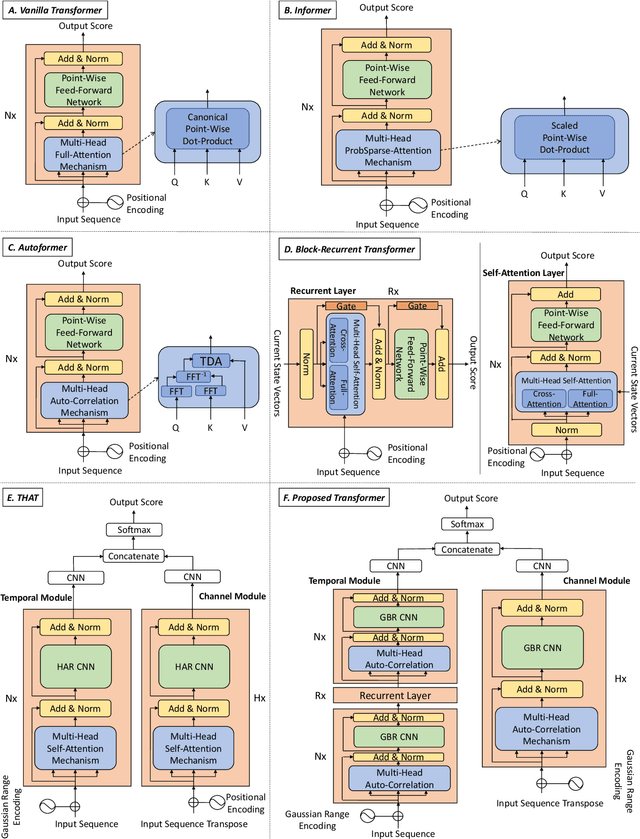
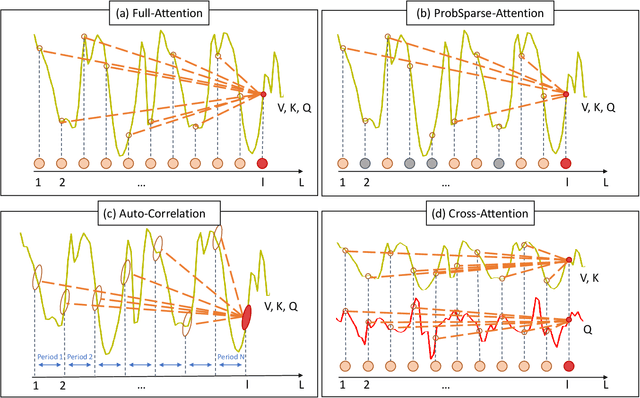
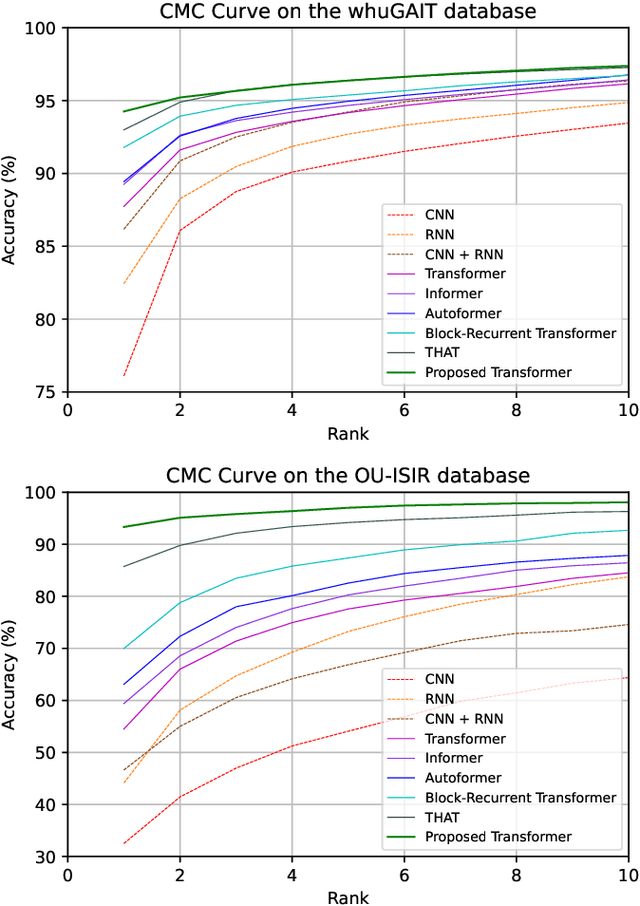
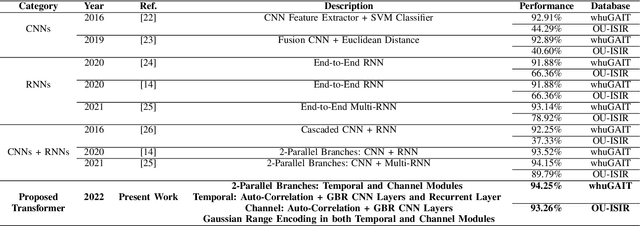
Abstract:Biometrics on mobile devices has attracted a lot of attention in recent years as it is considered a user-friendly authentication method. This interest has also been motivated by the success of Deep Learning (DL). Architectures based on Convolutional Neural Networks (CNNs) and Recurrent Neural Networks (RNNs) have been established to be convenient for the task, improving the performance and robustness in comparison to traditional machine learning techniques. However, some aspects must still be revisited and improved. To the best of our knowledge, this is the first article that intends to explore and propose novel gait biometric recognition systems based on Transformers, which currently obtain state-of-the-art performance in many applications. Several state-of-the-art architectures (Vanilla, Informer, Autoformer, Block-Recurrent Transformer, and THAT) are considered in the experimental framework. In addition, new configurations of the Transformers are proposed to further increase the performance. Experiments are carried out using the two popular public databases whuGAIT and OU-ISIR. The results achieved prove the high ability of the proposed Transformer, outperforming state-of-the-art CNN and RNN architectures.
Adaptive Template Enhancement for Improved Person Recognition using Small Datasets
Jan 03, 2022



Abstract:A novel instance-based method for the classification of electroencephalography (EEG) signals is presented and evaluated in this paper. The non-stationary nature of the EEG signals, coupled with the demanding task of pattern recognition with limited training data as well as the potentially noisy signal acquisition conditions, have motivated the work reported in this study. The proposed adaptive template enhancement mechanism transforms the feature-level instances by treating each feature dimension separately, hence resulting in improved class separation and better query-class matching. The proposed new instance-based learning algorithm is compared with a few related algorithms in a number of scenarios. A clinical grade 64-electrode EEG database, as well as a low-quality (high-noise level) EEG database obtained with a low-cost system using a single dry sensor have been used for evaluations in biometric person recognition. The proposed approach demonstrates significantly improved classification accuracy in both identification and verification scenarios. In particular, this new method is seen to provide a good classification performance for noisy EEG data, indicating its potential suitability for a wide range of applications.
The Multiscenario Multienvironment BioSecure Multimodal Database (BMDB)
Nov 17, 2021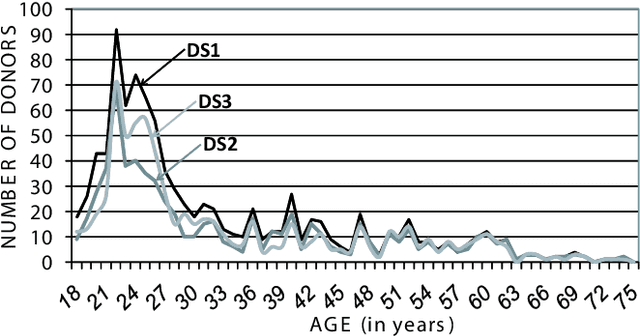


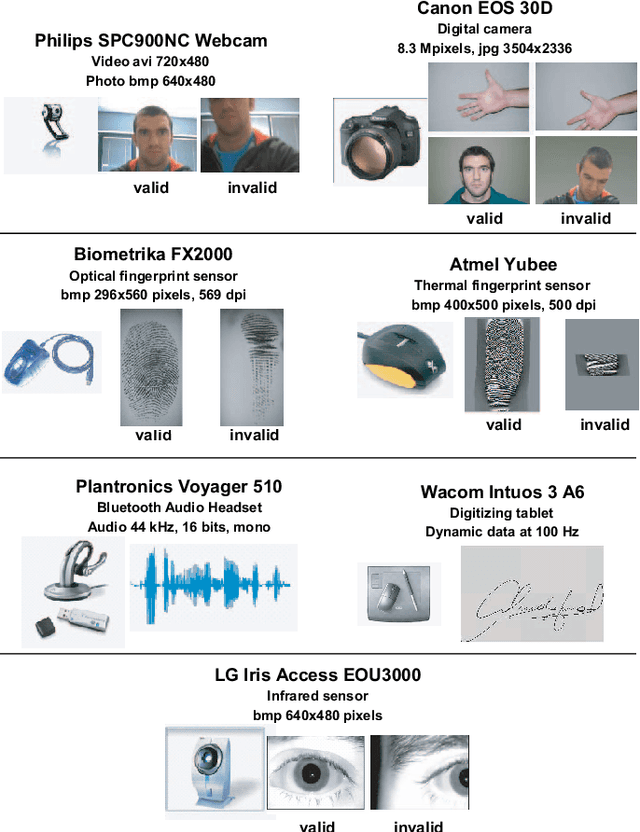
Abstract:A new multimodal biometric database designed and acquired within the framework of the European BioSecure Network of Excellence is presented. It is comprised of more than 600 individuals acquired simultaneously in three scenarios: 1) over the Internet, 2) in an office environment with desktop PC, and 3) in indoor/outdoor environments with mobile portable hardware. The three scenarios include a common part of audio/video data. Also, signature and fingerprint data have been acquired both with desktop PC and mobile portable hardware. Additionally, hand and iris data were acquired in the second scenario using desktop PC. Acquisition has been conducted by 11 European institutions. Additional features of the BioSecure Multimodal Database (BMDB) are: two acquisition sessions, several sensors in certain modalities, balanced gender and age distributions, multimodal realistic scenarios with simple and quick tasks per modality, cross-European diversity, availability of demographic data, and compatibility with other multimodal databases. The novel acquisition conditions of the BMDB allow us to perform new challenging research and evaluation of either monomodal or multimodal biometric systems, as in the recent BioSecure Multimodal Evaluation campaign. A description of this campaign including baseline results of individual modalities from the new database is also given. The database is expected to be available for research purposes through the BioSecure Association during 2008
GaitPrivacyON: Privacy-Preserving Mobile Gait Biometrics using Unsupervised Learning
Oct 08, 2021
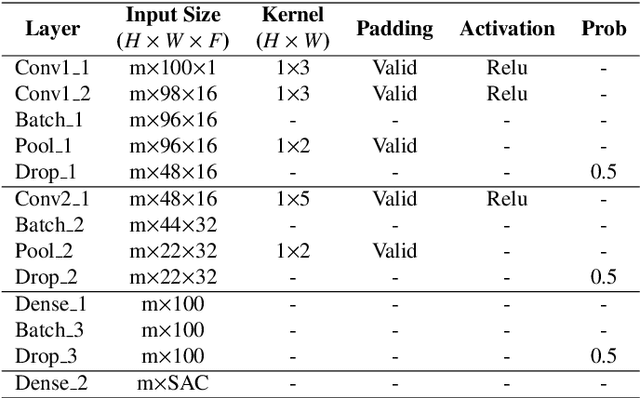
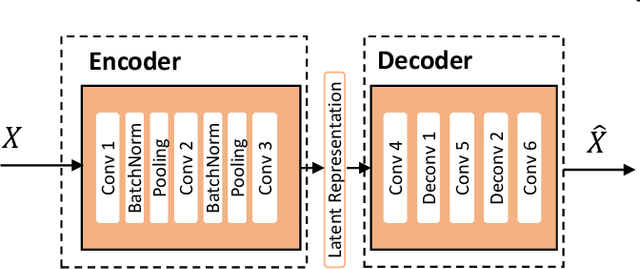
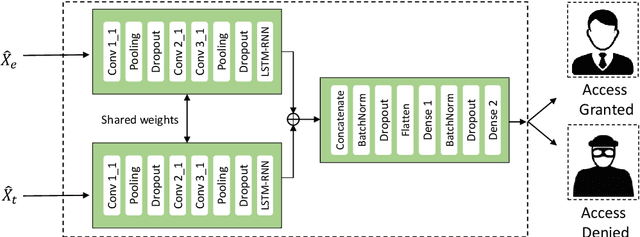
Abstract:Numerous studies in the literature have already shown the potential of biometrics on mobile devices for authentication purposes. However, it has been shown that, the learning processes associated to biometric systems might expose sensitive personal information about the subjects. This study proposes GaitPrivacyON, a novel mobile gait biometrics verification approach that provides accurate authentication results while preserving the sensitive information of the subject. It comprises two modules: i) a convolutional Autoencoder that transforms attributes of the biometric raw data, such as the gender or the activity being performed, into a new privacy-preserving representation; and ii) a mobile gait verification system based on the combination of Convolutional Neural Networks (CNNs) and Recurrent Neural Networks (RNNs) with a Siamese architecture. The main advantage of GaitPrivacyON is that the first module (convolutional Autoencoder) is trained in an unsupervised way, without specifying the sensitive attributes of the subject to protect. The experimental results achieved using two popular databases (MotionSense and MobiAct) suggest the potential of GaitPrivacyON to significantly improve the privacy of the subject while keeping user authentication results higher than 99% Area Under the Curve (AUC). To the best of our knowledge, this is the first mobile gait verification approach that considers privacy-preserving methods trained in an unsupervised way.
 Add to Chrome
Add to Chrome Add to Firefox
Add to Firefox Add to Edge
Add to Edge